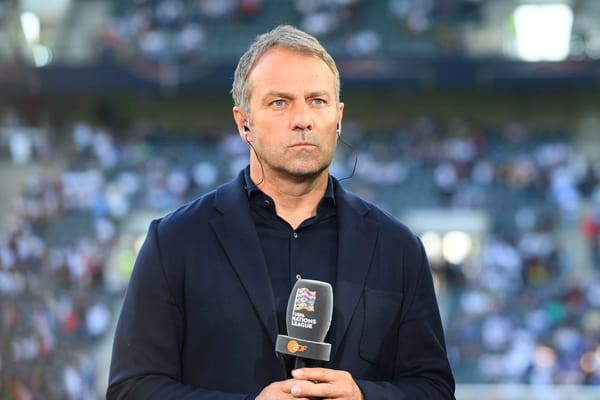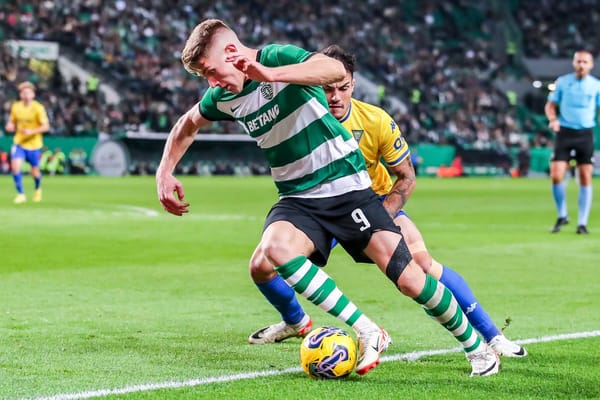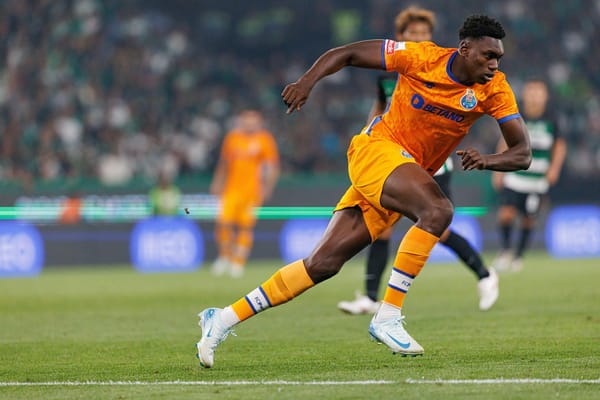Joao Cancelo: The solution to Xavi's void of creativity?
How Cancelo adapts to Barcelona's system will largely determine how he fares as Xavi's go-to right-back.
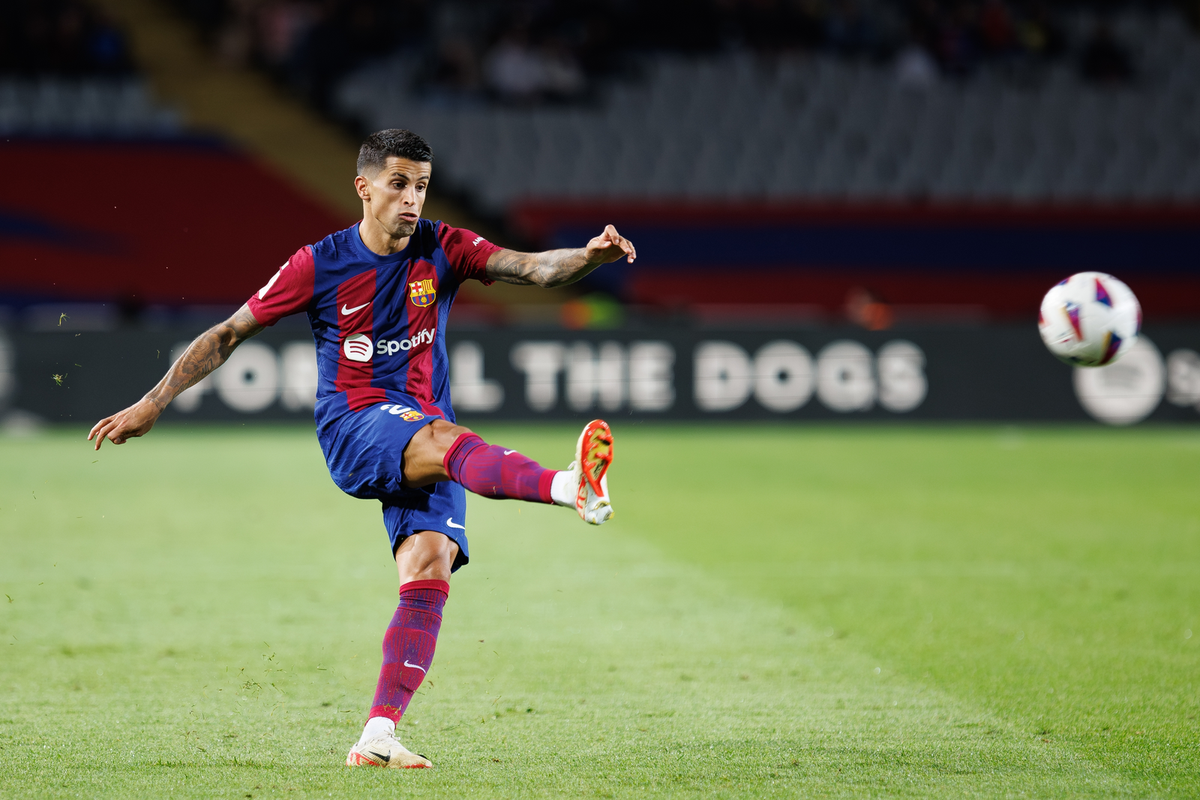
Barcelona's search for the ideal right-back has already spanned for years. But with the arrival of Joao Cancelo, Xavi will be hoping to finally put the ghosts of the past to rest. The former Manchester City and Bayern Munich player is the creative spark that could ignite Barcelona's attacking aspirations and bring about a change that's been needed for far too long.
But how does he fit into Xavi's jigsaw and what should we expect from him in the upcoming season ?
Let's find out.
The anatomy of a full-back
Cancelo is not your traditional full-back in any sense of the word; He’s not the traditional lung-bursting overlapper nor the traditional invert-into-midfield type of player but rather something in-between. But having played under Pep Guardiola's rigorous schemes, it doesn't surprise the 29-year-old is somewhat of an anomaly.
In fact, we are talking about an interior playing at right-back rather than a right-back often playing where midfielders generally do. Cancelo's skill set is simply that vast and that versatile. Below is a statistical comparison between him and Jules Kounde, Barcelona's current preferred choice for the position in question.

Of course, the major caveat is that when it comes down to it, this is not a good comparison; Kounde is not exactly a full-back and while Cancelo isn't either, their skill sets differ so much that it makes the comparison void. However, it is still necessary as it gives us an outlook of how the latter replacing the former will affect Barcelona's system.
There is no escaping the fact Cancelo is superior to Kounde in almost every single on-the-ball category ranging from progression, chance creation and threat to shooting and goal-scoring. In possession, the addition of the Portuguese has the potential to increase Barcelona's output dramatically. Not to mention his proficiency to be deployed on both flanks, with some differences in how he operates, of course.
Cancelo's ball-striking is excellent and the fact he strikes well through the ball with both feet makes him that much of a bigger asset to have. With his signing, Xavi is looking to fill the creativity void that was left with Ousmane Dembele's exit but while Cancelo can provide that, he will undoubtedly do it in different ways to the Frenchman. Physically, however, he isn't someone to constantly bombard up and down the flank or cover large spaces off the ball. As such, his value in a rest-defence unit isn't as great. That being said, however, he can handle the volume and assume the responsibility of progression, retention and creation in possession, which Xavi will certainly adore.
Joao Cancelo is Xavi's weapon to take Barcelona to a new level.
— Domagoj Kostanjšak (@DKostanjsak) August 22, 2023
There are no doubts about it, it's a transformative signing which will give them another dimension in attack.
Cancelo is creative, technical & versatile but how will he fit the team?
Let's analyse it 🔎
|THREAD| pic.twitter.com/mTOdZ9nkWr
Cancelo the full-back hybrid
We have established Cancelo is not your archetypal full-back. But how does he operate, then? Well, the great thing about him is that he can operate on both flanks and in both the inverted and the overlapping roles. That said, however, he has a clear preference; Cancelo is competent on the outside but still prefers the inside.
When he inverts, he will mostly assume a position in the right half-space. From there, he likes to roam and be highly involved in all the phases across the pitch, preferably with the ball at his feet. What this means for Barcelona is that he isn't necessarily an outlet to attack space but rather a player who likes to dominate the ball and constantly have it.
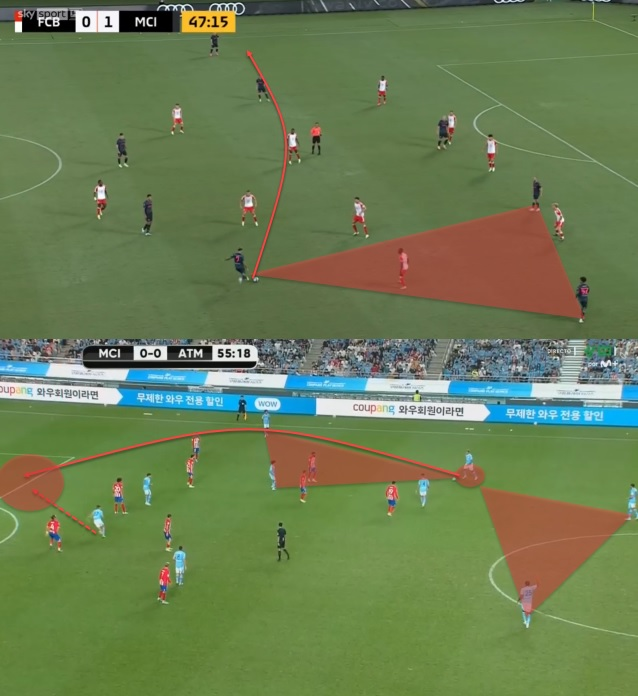
In the picture above, you can see Cancelo's main connections on the pitch and this is where we will find him most often when his team is in a settled phase of possession. The 29-year-old is largely tucked into his half-space and assumes a position just behind the winger and the right midfielder, forming a triangle we can also see above.
This is the ideal scenario for a player of his profile; he's an elite creator on the ball who feels most comfortable when feeding passes into the runners, not being the runner himself. That means natural wide-wingers who can attack space complement him the best. But these examples also demonstrate Cancelo's connections with the midfield and the backline.
In possession, he can start as a part of the backline, collecting or receiving the ball deep and then running with it to gain territory or distributing directly from the deep. Once he inevitably advances higher up the pitch, however, he will look to link up with the players in his close vicinity, ie the midfielders, or use his long distribution to find runners, as seen in the example too.
But we have to consider Cancelo as the width-holder as well. This is a role he can and will do competently but it won't get the best out of his profile.
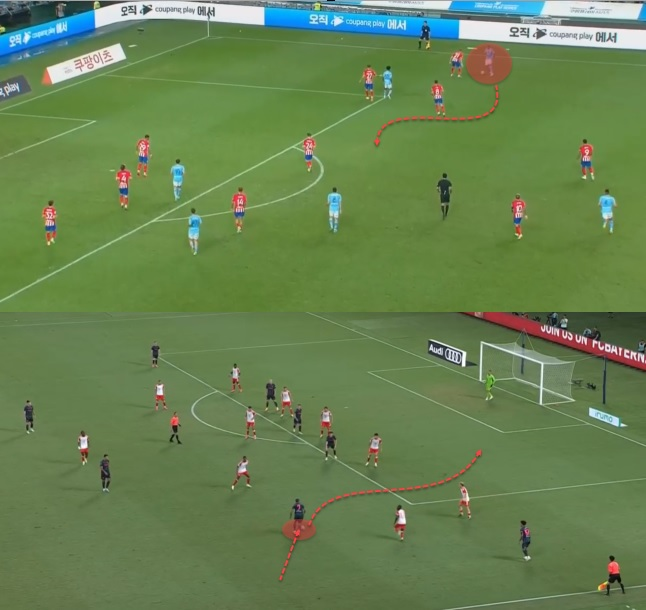
When he receives the ball out wide, Cancelo prefers to beat his man on the inside, meaning more often than not, he will invert and crash the box from outside to in. This goes hand-in-hand with his weak foot proficiency as this is the situation in which he can often utilise his left foot too. However, we have to note that despite his decent pace and the propensity to attack space, he doesn't eat up ground nor does he prefer to chase the ball into the open space.
Instead, even if he's tasked with being the width-holder, he will ask for it to be played into his feet and will even drop deeper to collect it. However you twist it, he is very different from someone like Jordi Alba, who is a space invader rather than a link-up machine. But this doesn't mean he can't make such runs nor that he never does. He very much can and will. But in certain situations.
Even though he is an elite distributor of the ball, Cancelo still likes to run and dribble with it at his feet. That often means starting in deeper areas and finishing in higher areas. But even if he's making runs off the ball, that same pattern will often be recognisable: start deep, finish high.
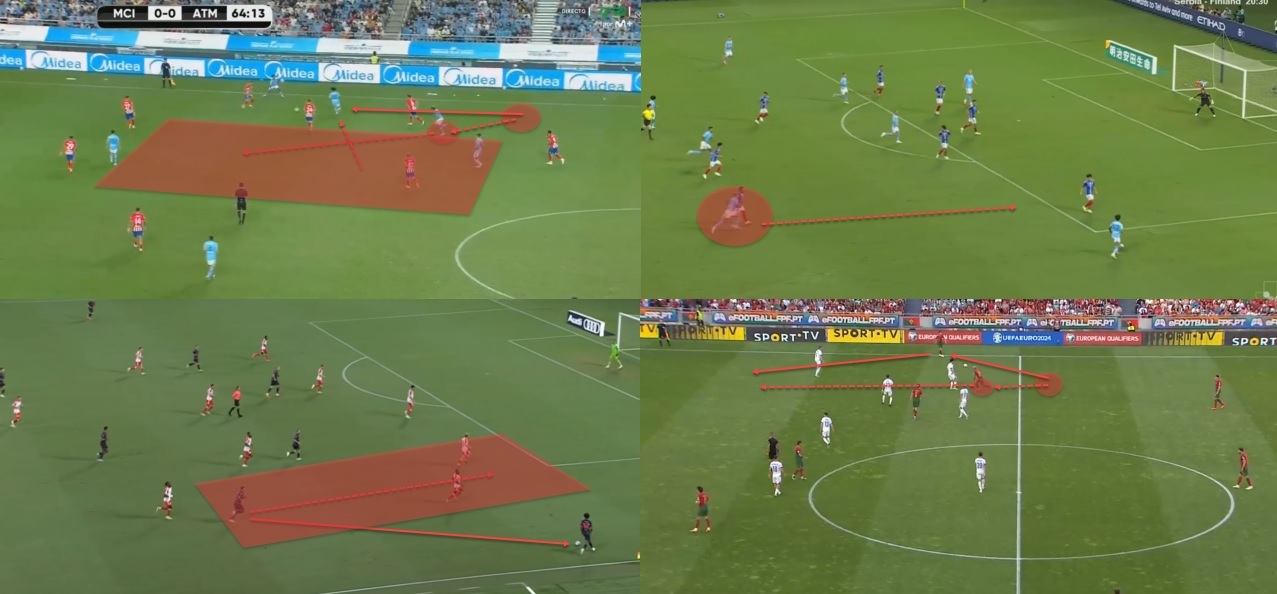
We can see such instances in the examples above. Cancelo will often collect the ball deep and then depending on the context and the setup of the team do one of two things: aim for runners or a free man with a long delivery or do a quick link-up and then make a deep run into space. What makes this so effective is the timing of such runs.
Cancelo isn't a lung-bursting space invader, we've established that already. But he is an efficient space invader nonetheless. The Portuguese star knows how to recognise the space, how to time his runs well and then how to execute it on a high level.
When combined, all of these traits make him a big threat in the final third.
The right-side dynamics
Even though Cancelo can play on both sides of the pitch, he is primarily going to be Barcelona's new right-back. This means that Xavi will have to ensure he fits the right-hand-side dynamics too. With the exit of Dembele, Raphinha and Lamine Yamal are the two clearest picks for the position of the right-winger, the player Cancelo will have to interact with every game.
As we have already established earlier in the analysis, he works best when he's paired up with a runner or a pure goalscorer as that's when his creative passing is most effective. The issue, however, is that neither Raphinha nor Yamal necessarily fit that description. The Brazilian is someone who can make runs and has been known to do so to great effect but he's very much a minimum-width type of player rather than someone to exploit large open spaces like Dembele.
Raphinha is also a creative passer who starts wide but inevitably cuts inside and then distributes the ball into runners or the box. The same is true for Cancelo, who thrives in very similar situations.

The graph above gives us a better overview. Cancelo the right-back is either wide in the deeper areas or in the right half-space but rarely advances all the way up in the opposition's half. That gives us an indication of his overlapping tendencies or lack thereof. Instead, we find him in similar pockets to Raphinha; they both invert and then distribute from a similar position.
This isn't necessarily a deal-breaker since there are ways to make it work. Raphinha can be used as a runner and so can Cancelo if needs be. One of them, however, is likely going to have to compromise to make this partnership fruitful. The next graph will deal with their deliveries and the areas from which they deliver the ball.

Obviously, Raphinha's volume is much higher than that of Cancelo but that's also because the latter's sample is often distributed between the left and the right side of the pitch. Still, even with a smaller sample, we can see the similarities between the two. Interestingly, this would in theory give Xavi an option to play Cancelo as the winger in front of a more defensive right-back. He may not be the huge space exploiter Dembele was but he can dribble and has decent pace and excellent ball-striking. Some of the ingredients are there, albeit not all.
Yamal is similar to Raphinha in this regard; he's not someone to eat up space and will invert into the central channels and attack the box. Despite his better dribbling capabilities, he is still a minimum-width player too. But that doesn't mean this partnership wouldn't work. Against Cadiz, for example, we saw Kounde in the role that would fit Cancelo like a glove.
The Frenchman was often just outside the attacking unit, distributing the ball into the box and combining with Yamal and Gavi on the right-hand side. Alternatively, we would even see him make deep runs into the box to either drag markers and create space or simply to get into goal-scoring positions himself.

With that setup, Cancelo's deep runs and deliveries would be in the spotlight and that means playing to his strengths. Whether that's the role Xavi has in mind for his upcoming signing or not remains to be seen but it's a possibility nonetheless. If Cancelo is forced out wide excessively, he will likely not perform at an optimal or the highest possible level.
Sure, due to his individual quality, he can still be effective but not as effective as he could be. And if you get such a player, it would be a shame not to maximise his output the best way you can. Interestingly, however, the dynamics of the left-hand side might suit Cancelo even better. When playing there, the Portuguese is still someone who starts wide and likes to invert but he's also used to being a wide and high creative presence.
But the profiles Barcelona have on the left are significantly different to the ones they have on the right. Raphinha and Yamal are creators on the ball; players who cut inside and distribute or shoot. On the left, the likes of Ansu Fati and Ferran Torres are goal-scorers and players who exploit space intelligently, identifying and occupying high expected goals positions. In other words, they would complement Cancelo perfectly.
However, it is unlikely Xavi benches Balde in favour of Cancelo. But as a rotational or very situational option? Perhaps.
Final remarks
In a vacuum, the deal to bring Cancelo to the Camp Nou has almost no downsides; he's coming in as a loanee with no obligation to buy and won't be on ridiculously high wages. Not to mention that he is a proven elite so his individual quality is not in question. However, none of that guarantees success.
How he adapts to Barcelona's system and the connections he forms on the pitch will largely determine how he fares as Xavi's go-to right-back. Of course, a big part to play is still the coach's as he is the one who needs to make sure he can maximise and gel the profiles of players he has in the squad. On paper, there are still some questions that need answering but that will be a bridge Xavi needs to cross once the time comes.
Until then, all the best of luck to Cancelo as his new adventure begins.

